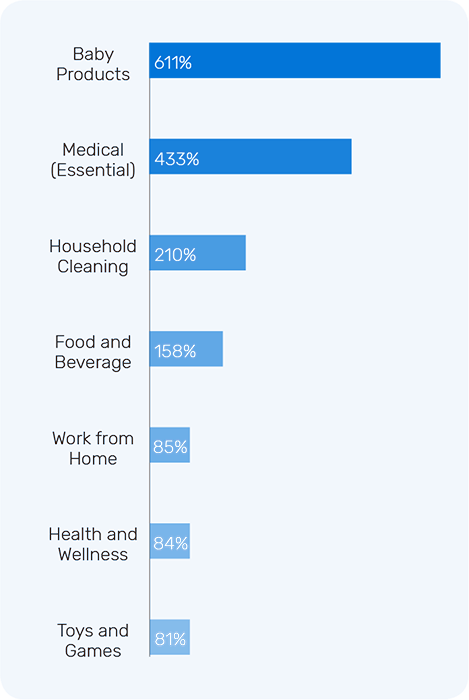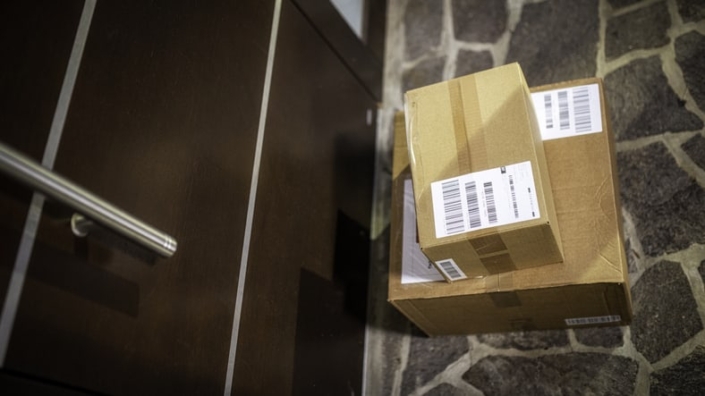Through technology, commerce has become nearly on demand. A trend that has been on the minds of shoppers and shippers over the past several years has been same-day delivery. A recent study found that:
- 80% of ecommerce shoppers want same-day delivery to be an option at checkout
- 56% of Millennials expect it
- 23% of consumers would pay a premium to have their orders delivered same-day
Once a niche and expensive service available only via obscure courier services in large cities, same-day shipping has entered the spotlight. This trend has only gained momentum as the country faces a pandemic; consumers have been introduced to new methods of quick shopping while staying at home.
Behind the headlines and virtual storefronts lives a complex combination of digital, physical, and workforce assets. Orchestrating and optimizing the shipping process in order to achieve a viable cost structure requires leading technology and advanced algorithms. Many carriers are achieving this by making same-day delivery not only convenient in these times, but also expected moving forward. Big retailers continue to invest billions of dollars into delivery infrastructure, recognizing that ecommerce is not only a part of the future of shopping, but in many cases, it is also the future of shipping.
Same-Day Delivery Changes the Landscape
As warehouses pop up, and legacy retail spaces are converted to fulfillment centers, products are now closer to consumers than ever. This allows shippers to overlap SKU availability with carrier coverage, creating network density that gets products into the customer’s hands faster. When the time it takes to receive an ecommerce order rivals the time it takes a customer to go to the mall — as is the case with grocery delivery in many places today — near-instant gratification in the shopping experience will transform into a societal expectation.
Companies view carriers as a commodity. In the same way consumers expect retailers to offer expedited (and often free) shipping options, retailers expect carriers to have excellent on-time delivery rates (OTD) at cost-effective prices. In this scenario, well-capitalized, competent carriers will thrive, while others will consolidate or in some cases, cease to exist. With less available carriers to choose from, but a higher overall average NPS (Net Promoter Score), consumer expectations for seamless delivery of products will only increase. The combination of strong ecommerce retailers with capable same-day carrier networks will lock-in consumers and create staying power for both parties.
Businesses today need to have a plan centered around the way the world will look in 2023. Gone will be the days of 5-7 day shipping, and more than likely, innovative retailers with brick-and-mortar stores will have transformed at least some part of their operations to enable initiatives like Ship-from-Store. While today, 85.4% of holiday shopping is done in physical stores, ecommerce has been gaining share at a rapid pace, and it is only likely to continue. While some businesses view ecommerce as a threat and carriers as a cost center, the experience provided by a combination of ecommerce and same-day delivery can actually create a profit center.
Selecting Your Carrier Mix
When an ecommerce business adopts the mindset of making shipping a part of its strategy and competitive advantage, selecting the very best partners is key. An understanding of the importance of same-day carriers — their relative strengths and what they can enable — will help differentiate forward-thinking ecommerce players from the pack. If recent events are any indication, businesses need to be prepared for changes in how consumers shop. Trends already in motion are often expedited by events like the COVID-19 crisis. This current ecommerce boom may be a glimpse into a future that has arrived sooner than expected. Ecommerce businesses need strategies centered around same-day carriers in order to keep up with customer demands.
Top 3 Value Props of Same-Day Carriers
Increase Cart Conversion
The “instant-gratification” effect on consumers. When an item is in their cart, they are more likely to follow through with the order if they are able to receive it that same day. 26% of online shoppers abandon their carts because available shipping time options were too long.
Higher CLV (Customer Lifetime Value)
Customers are more likely to get “locked- in” to ecommerce sites where they experience quick and seamless delivery.
Increase AOV (Average Order Volume)
By some estimates, AOV increases by as much as 30% when same-day delivery is presented as an option.4 Offering free same-day delivery over a certain spend can also be used as a threshold to entice customers to add items.
The What

A number of new, tech-forward, same-day and next-day carriers have emerged over the past several years including Jitsu, Deliv, and Veho. Verticals such as grocery, pharmacy, and digitally native DTC brands have been early adopters, with more established players starting to embrace expedited service levels. As seen in the chart below, trends that already had tremendous momentum have accelerated during COVID-19 — for example, ecommerce orders of cleaning products increased over 200%.5 The question is not whether the trend for these verticals will continue, but which verticals will be disrupted next, and which carriers are going to service the extra demand.
The Why
If the billions of dollars invested into fulfillment and delivery infrastructure over the past several years by retail giants are any indication, delivering products cheaply and quickly to customers needs to be a priority for any ecommerce company. As the old retail giants, like Macy’s, J.C. Penney, and Nordstrom teeter on the brink of bankruptcy, it should be a lesson to every ecommerce business that embracing the expectations of a new generation of shoppers will help a business survive and transform shipping into a profit center. There are numerous examples where increasing cart conversion, AOV, and NPS scores can be attributed to offering fast, low-cost shipping. This ultimately leads to a higher CLV as they become accustomed to a routine of ordering necessities, instant gratification of spontaneous purchases, and loyalty to ecommerce companies which offer seamless delivery experiences.
The How
As more consumers expect same-day delivery to be an option and with many willing to pay a premium for it, brands, retailers, logistics platforms, and carriers alike will have to adjust. Next-generation 3PL and fulfillment providers like Darkstore, Flowspace, and FLEXE provide flexible micro-fulfillment to help traditional brands get inventory closer to consumers, enabling quicker delivery of products. Delivery orchestration platforms like Bringg cater to large enterprises like Coca-Cola and AutoZone, who recognized a shift in consumer expectations taking place. The future of delivery is fast approaching and brands quick to adopt service providers and platforms that enable same-day carriers have the opportunity to make instant gratification a part of their core brand value proposition ahead of the herd.



